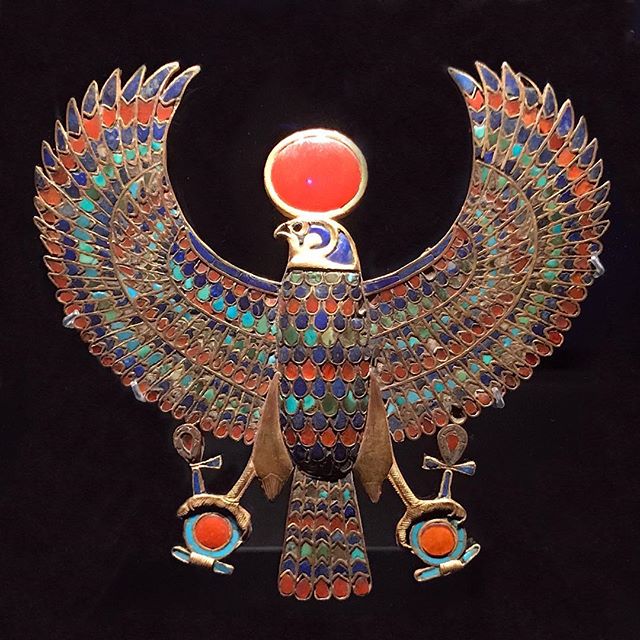Tombs contained various amulets such as scarabs and keys of life as early as the Predynastic Period. Necklaces, bracelets and belts made of beads crafted from a variety stones could also be found within these tombs. Ivory, bones, semi-precious stones, gold or silver were used to make elaborate jewelry: necklaces during the Old Kingdom, diadems during the Middle Kingdom and various headdresses during the New Kingdom. From the Middle Kingdom on, amulets altered the shape of hieroglyphics and the royal loincloth was elaborately adorned with shells and beaded fishnets. Ornamental breastplates were finely crafted using the techniques of inlaying and partitioning. Men started wearing anklets during the Middle Kingdom, following the trend popular amongst women since the Old Kingdom. Earrings appeared during the New Kingdom in many different shapes: hoops, pendants on rings, discs and plugs; and were sometimes adorned with granulation. Rings embellished with fixed or mobile precious stones, sometimes shaped like scarabs, were particularly popular during the New Kingdom.
The symbolism behind the stones and metals used in jewelry
Gold gave things a sacred quality; it was the ultimate reward. It symbolized life, represented the sunlight and was the expression of the Gods’ inalterability. It participated in the dead’s ascension to the divine and immortality. This is why it was used for the making of sarcophagi. 114 kg of solid gold were used to craft Tutankhamun’s sarcophagus, for example.
Silver was rarer than gold and was the lunar metal. It represented the Gods’ bones and symbolized eternal youth.
Lapis lazuli was linked to the primordial universe, the Gods’ hair and allowed for rebirth.
Turquoise was a symbol of renewal and was claimed to have prophylactic qualities. It was associated to birth and rest.
Green stones like malachite represented fertility, rebirth, life after death.
Red stones like jasper and carnelian had a protective, religious and magical role.
Al Tayeb Sayed
Egyptologist & Accredited Guide, Luxor

